March 3, 2025
By Maddie Gard, WSG Science Communications Fellow
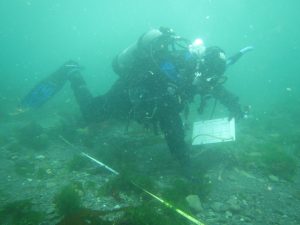
Elwha River dam removal SCUBA marine ecosystem monitoring – Photo courtesy of Ian Miller
When the Elwha River dams were breached in 2011, a century’s worth of accumulated sediment was released and transported downstream to the coastal zone. An estimated 19 million metric tons of mud, sand and gravel that had been trapped in the dam reservoirs transformed twists and turns of the Elwha River, eventually flushing out to the coast and reshaping the river delta near Port Angeles. Since then, Washington Sea Grant (WSG) coastal hazards specialist Ian Miller has been investigating and assessing the coastal influences of the Elwha watershed restoration and resulting sediment transport.
Miller has been closely connected to the Elwha River long before the dam removals occurred. Early in his career he worked on the Olympic Peninsula as an environmental educator, where he taught students about the Elwha dam removals as a case study in discussions about environmental decision-making. In graduate school, his PhD dissertation centered around Elwha River sediment transport and shoreline evolution modeling. Upon graduation, he joined the WSG team as a coastal hazards specialist, around the same time the Elwha dam removal decision was made.
The timing was uncanny, and Miller saw the opportunity to develop a high frequency monitoring program to determine how the shoreline and river delta would respond physically when the dams were breached. Ultimately, the coastline near the Elwha River’s mouth transformed. Huge amounts of sediment built new stretches of sandy beach and sandbars peeking above the water’s surface. Brackish lagoons formed where freshwater pooled in between swirling sandbars. Prior to the removals, researchers had developed theories about what might happen, but now they could monitor how the nourishment of sediments to the river delta impacted shorelines in real time.
Where sediments would end up, how long they would last, and the impact increased sediments would have in terms of changing shoreline conditions were top priority questions for the coastal hazards specialist. During this time, a SCUBA-based marine ecosystem monitoring project was developed by the United States Geological Survey to determine how the marine community responded to changing coastal conditions. In his position at WSG, Miller served as a local liaison for researchers visiting the Port Angeles area, helping to connect resources, support research objectives, and build the network of professionals interested in the Elwha River. WSG-funded monitoring efforts confirmed that sediments reshaped the shoreline and restored eroding beaches.
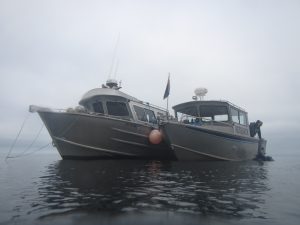
Research vessels conducting observations for Elwha River marine-community and sediment transport monitoring – Photo courtesy of Ian Miller
Prior to the Elwha River dam removals, many scientists were concerned that the sediments released would be catastrophic for the marine community. Years later, we know the dam removal and its cascading ecological effects have shifted some compositions of invertebrate species, including insects and crabs in the river delta. Kelp have mostly recovered, and the marine community as a whole near the river delta has been resilient to impacts. With this in mind, other rivers and coastal river delta systems may respond differently to dam removals. Every river and coastal system is different in its geomorphology, and varying changes to land-use such can have very different results in other systems.
Sediment changes in the Elwha continue to be relevant to Miller’s role with WSG. He works with coastal communities and public agencies in Washington state to strengthen their ability to plan for and manage coastal hazards, including chronic erosion, coastal flooding, and sea level rise associated with climate change. As it happens, nourishment from sediments is a coastal management strategy already being used for climate adaptations. Many coastal communities use beach nourishment, or the intentional pumping and placing of sand on shorelines, as a method for dealing with hazards exacerbated by sea-level rise. Sediment nourishment can also occur naturally through landslides, volcanoes, and erosion processes. From a coastal management standpoint, the Elwha River has been a unique opportunity to study how deposited sediments provide natural nourishment to a river delta and shoreline, informing how and when this strategy could be applied elsewhere.
The Elwha River’s storyline is still unfolding. While it is unclear whether the marine community-focused SCUBA monitoring will continue this summer, Miller will continue his shoreline survey monitoring of sediments and their transport with Dr. Christie Hegermiller and student researchers, Cal Schurman and Sam Alampay. His career has been closely intertwined with the river since long before the dam removals occurred, and he’ll continue to keep his eyes on the Elwha going forward.
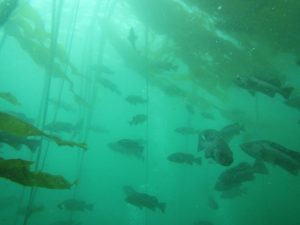
Bull kelp and rockfish in the Elwha drift cell, more than a decade after the Elwha River dam removals – Photo courtesy of Ian Miller
###
Washington Sea Grant, based at the University of Washington, helps people and marine life thrive through research, technical expertise and education supporting the responsible use and conservation of coastal ecosystems. Washington Sea Grant is one of 34 Sea Grant programs supported by the National Oceanic and Atmospheric Administration in coastal and Great Lakes states that encourage the wise stewardship of our marine resources through research, education, outreach and technology transfer.
Join the conversation: instagram.com/waseagrant and Facebook.com/WaSeaGrant.
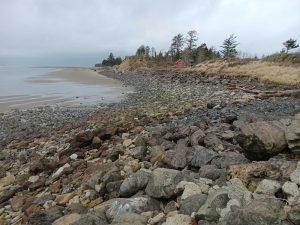
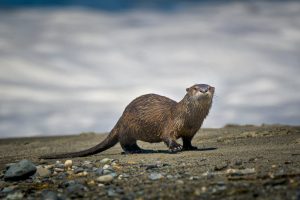
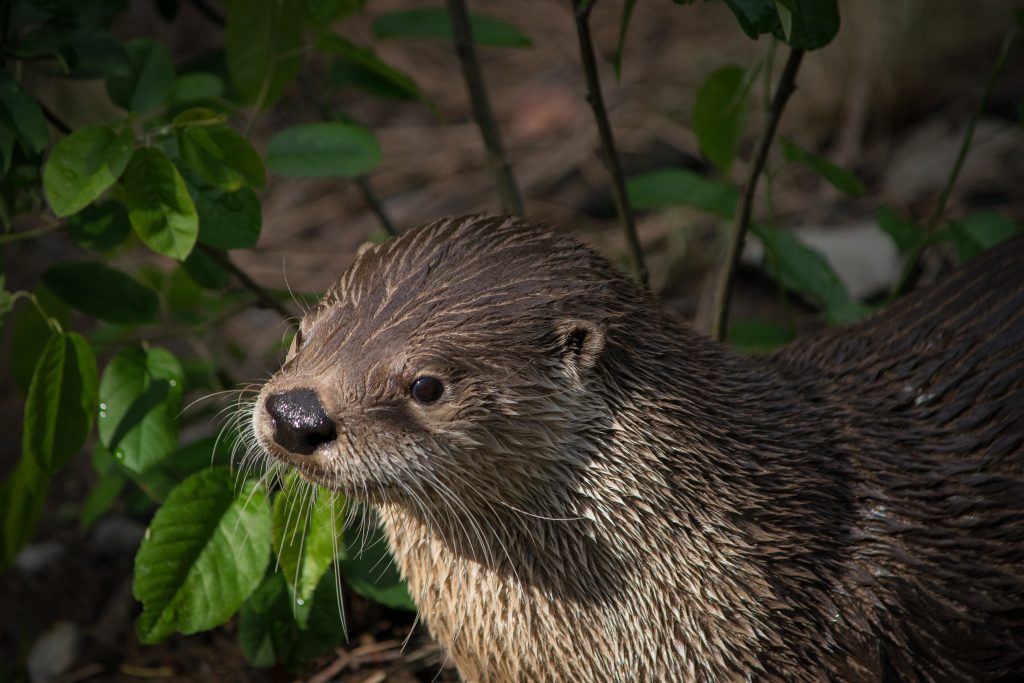
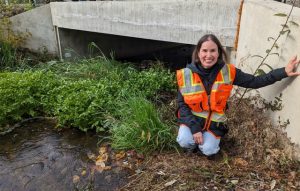
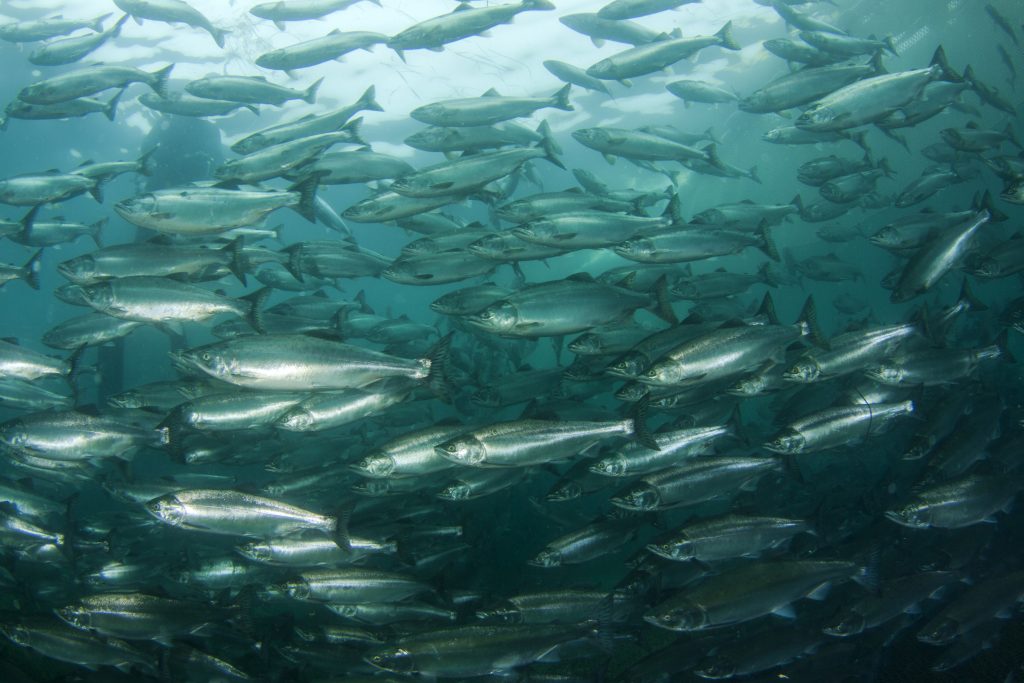
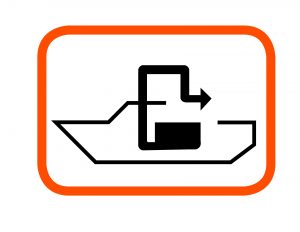 As the weather continues to warm, Puget Sound boaters are gearing up for another beautiful season. Whether it be their first time on the water or their tenth season in the Sound, all kinds of boaters are preparing their vessels for spring, and Washington Sea Grant (WSG) is preparing new ways to educate local recreational boaters on water safety. One new addition to our plethora of resources has been a redesign of the
As the weather continues to warm, Puget Sound boaters are gearing up for another beautiful season. Whether it be their first time on the water or their tenth season in the Sound, all kinds of boaters are preparing their vessels for spring, and Washington Sea Grant (WSG) is preparing new ways to educate local recreational boaters on water safety. One new addition to our plethora of resources has been a redesign of the